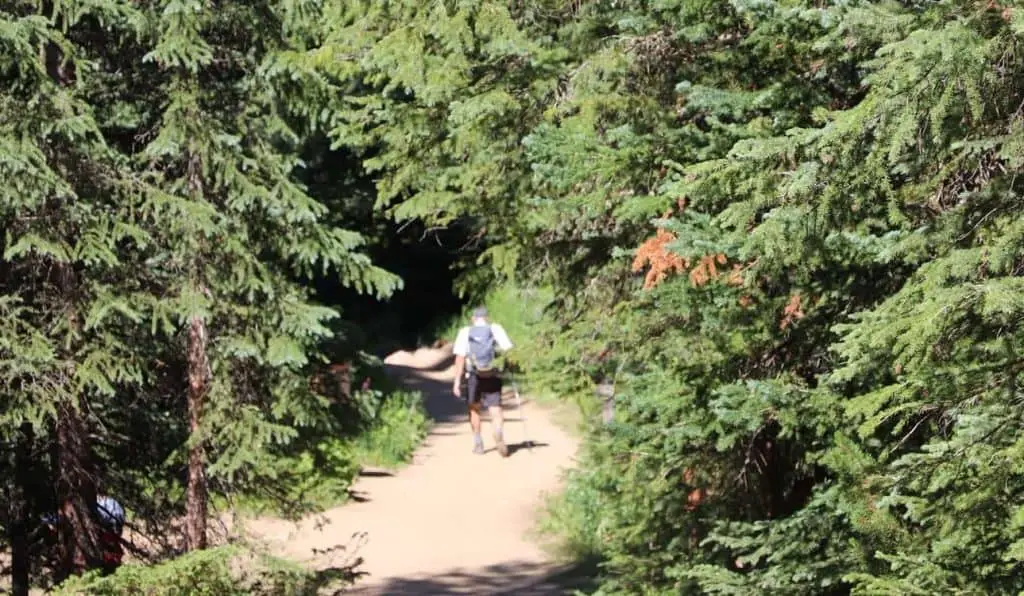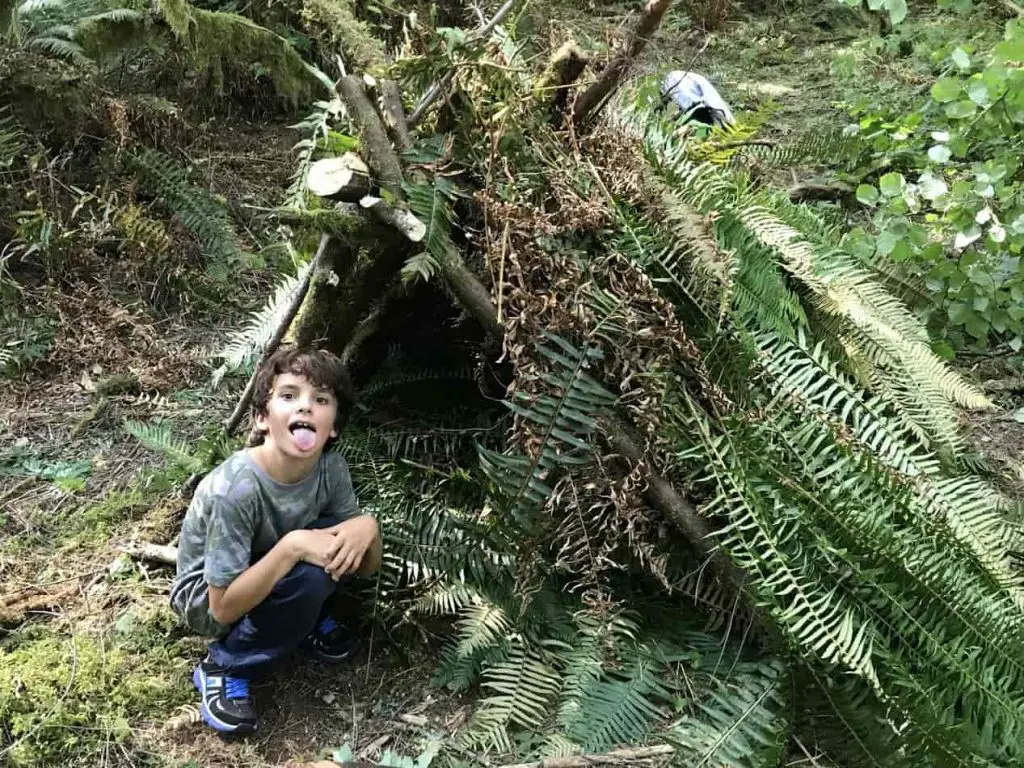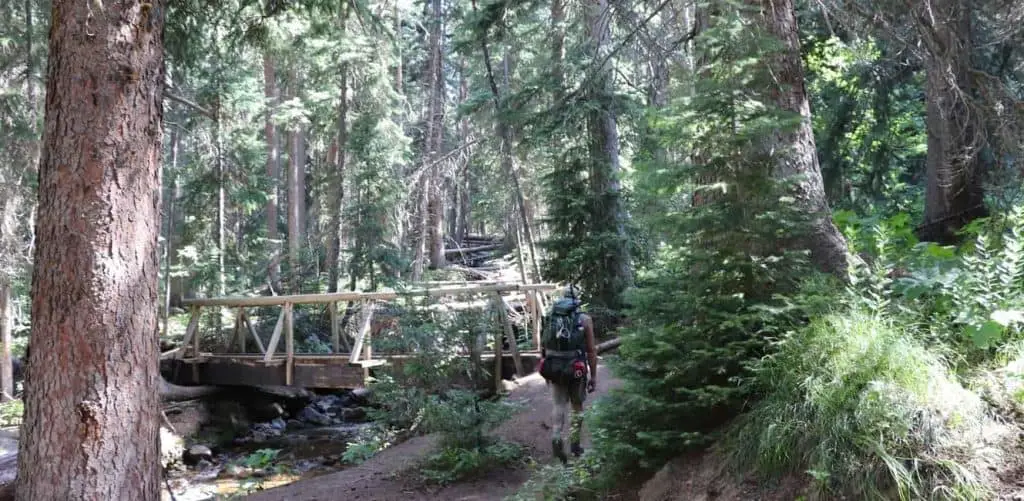If you are heading out for a hike, you might wonder whether you need a knife or not. Hiking is an activity that typically takes place in the woods away from civilization. A knife could come in handy if you are hiking and get lost or stranded, but do you need a knife to go hiking?
You do not need a knife to go hiking since it is an outdoor activity that involves walking along a route to experience nature. A knife can be useful on a hike if you plan to prepare food. A knife can also be helpful in a survival situation for building a shelter or marking your path.
If you are planning a hiking trip, you might be asking yourself if you need a knife. In this post, I provide some reasons why you may or may not need to bring a knife based on where you are going and the type of trip you are planning.

When You Do Not Need A Knife To Go Hiking.
For those familiar with Murphy’s Law, what I am about to suggest, might seem a little cavalier. There will always be a story or an anecdote about a hiker who died of exposure a short distance from their car. In those cases, a knife might not have made a difference.
If you are planning a day hike on a short route that you are familiar with, then a knife is not necessary. The chances of you getting lost and needing a cutting device to craft a shelter are almost negligible.
Similarly, on a short day hike, you will probably be carrying food that does not require preparation. There is very little chance that you will need a cutting tool to modify your gear. Whatever is wrong with your hiking shoe, most likely, you can suffer through it until you get back to your vehicle.
If you are on a longer day hike in an area with well-marked trails and lots of other hikers, then a knife is also not necessary. If, by some unfortunate event, you were lost and could not find your way back to your car, would a knife be useful?
If you are on a multiday trek through the wilderness on a guided hike, then you probably do not need a knife if you are glamping (glamour camping). I took my son on a four-day, high altitude trek in Peru without a knife. We had guides and ‘Campesinos’ that set up our tents and cooked for us.
For most short hiking situations, a knife is simply not essential, even if you get lost and spend the night in the woods. Are you familiar with techniques to build shelters? Have you ever used a knife to cut limbs from trees?
If you have never used a knife to craft things in the woods, then it might be more of a liability than an asset in an actual emergency. Instead of finding a dry place to hunker down for the night and conserve energy, you might spend hours building your first shelter with a knife, only to discover that you are uncomfortable, exhausted, and cold.

I took my son into the woods in Clark County, Washington, south of Mt. St. Helens for an overnight trip with the sole intention of building a shelter and sleeping in it.
We spent all afternoon on that shelter. I had cramps in my hands from using the knife, and I was drenched in sweat when we finished. In a real survival situation, we would have been better off that night under a large douglas fir keeping each other warm by sharing body heat.
If you are still not convinced that you do not need a knife to go hiking, then, by all means, bring a knife with you. Do not skip hiking opportunities because you don’t have a knife to carry. Go hike. You will be fine.
When You Do Need A Knife To Go Hiking.
If you are on a more extended day hike or even an overnight hike stretched out over multiple days, then a knife becomes more of an essential item. You will find yourself needing a blade to open containers, prepare food, adjust equipment, etc.
If the route you are planning is off the beaten path where there is little hope of finding civilization again with a short hike, then survival tools need to be on your packing list. A knife is an essential survival item.
If you are planning to camp out each night on a hike, then a knife is an essential item for food preparation. A blade can also be useful for cutting cords used to pitch tents or for modifying other equipment that you have with you.
Your gear is useless to you if it is broken. A broken strap on a backpack is a real problem on a weeklong hike. With a knife, you might be able to fix that backpack.
When my son and I finished our shelter in Washington State, we walked through the thick underbrush in the late afternoon to cool off in the stream that was north of us. We were going off-trail to avoid contact with other people.
As we walked, I cut off strips of bark with my father’s Ka-Bar from his time in the United States Marine Corps in the early 1960s. I blazed the backsides of the young alder and maple trees so that when we returned from the creek, we could find our shelter again.
In a survival situation, there are many uses for a cutting tool. I suggest learning and practicing some knife basics for survival before you find yourself in an actual survival situation.

Bringing A Knife On A Hike.
Now you have assessed your situation, and based on the type of hike you are planning, you have decided to bring a knife. The kind of knife you carry on a walk will depend upon many factors, including your familiarity with using knives.
The most basic knife you can bring with you on a hike is a small, folding blade that you can fit in your pocket. This is what your grandfather may have carried around religiously, pulling it out to help you open Christmas presents, or rig your fishing pole for you.
Check the laws where you plan to hike. A folding pocket knife might be an excellent option to avoid having to explain to local authorities why you are carrying a Rambo-style survival knife strapped to your belt.
Many European countries have stricter laws for carrying knives than do states in the USA. For a more in-depth discussion on hiking with a knife in Europe, check out this post.
A quality survival knife can be the difference between life and death in the hands of an experienced outdoor enthusiast in a bad situation. You can make shelter, signal fires, traps, weapons, and the list goes on.
Typically a survival knife will be a fixed blade with a single cutting edge. You can carry it in a sheath on your belt or in your backpack. Longer than a folding pocket knife, a fixed blade knife will be easier to use for more extended periods.
If you do find yourself in the infinitesimally small group of people that have faced an actual outdoor survival situation, then you will want a proper survival knife and not a pocket knife.
For a compromise between a proper, fixed blade survival knife and a pocket knife, you can consider a folding knife that locks in place. These can be safer for transporting since you don’t need a sheath.
If you are concerned about local weapon laws for knives, locking blade knives are also easier to conceal since they are more compact than a fixed blade when folded.
Hiking is a great outdoor activity that is enjoyed by millions of people around the world. The vast majority of these people are not carrying knives, and they do not need one.
Some hiking situations warrant bringing a knife. Get one in advance and use it before you go on your hike. Like any tool, a knife requires some skill to use it properly.
